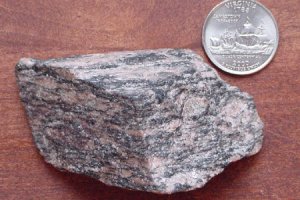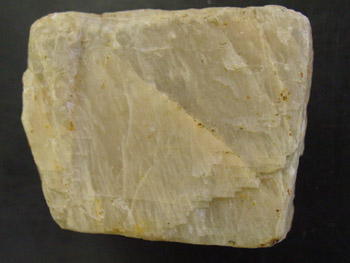feldspar

Figure 1. Plagioclase feldspar.

Figure 2. Orthoclase.
Feldspar is any of a group of rock-forming, aluminosilicate (containing aluminum and silicon) minerals that also contain one or two of the following metals: calcium, sodium, potassium, and, rarely, barium.
Potassium feldspars, principally orthoclase and microcline, are potassium aluminum silicates where sodium or barium may partly replace potassium. Plagioclase feldspars (Fig 1) form a series derived from sodium aluminum silicate (albite) with calcium replacing sodium in all proportions up to 100% (anorthite).
Feldspars make up about 60% of Earth's crust and are the major component in nearly all igneous rocks found on Earth, on the Moon, and in some meteorites. They are also common in metamorphic and some sedimentary rocks. Their complex chemical and structural properties make them useful for interpreting the origins of rocks.
Feldspars are commercially important in the glass and ceramic industries, pottery and enamelware, soaps, abrasives, bond for abrasive wheels, cements and concretes, insulating compositions, fertilizer, poultry grit, tarred roofing materials, and as a sizing (or filler) in textiles and paper.
Potassium feldspars
Orthoclase
Orthoclase (Figure 2) is a common mineral in igneous and metamorphic rocks, consisting of potassium aluminum silicate (KAlSi2O8). It occurs in the form of vitreous crystals in the monoclinic system, of various colors, notably white and pink. Orthoclase is one of the end-members (pure compounds) of the feldspar group. Hardness 6–6.5, relative density 2.5–2.6.
Microcline
Microcline is a common mineral in the feldspar group, occurring in igneous rocks as vitreous crystals of various colors. It has the same chemical composition as orthoclase, and differs from it only in the arrangement of the silicon and aluminum atoms.


